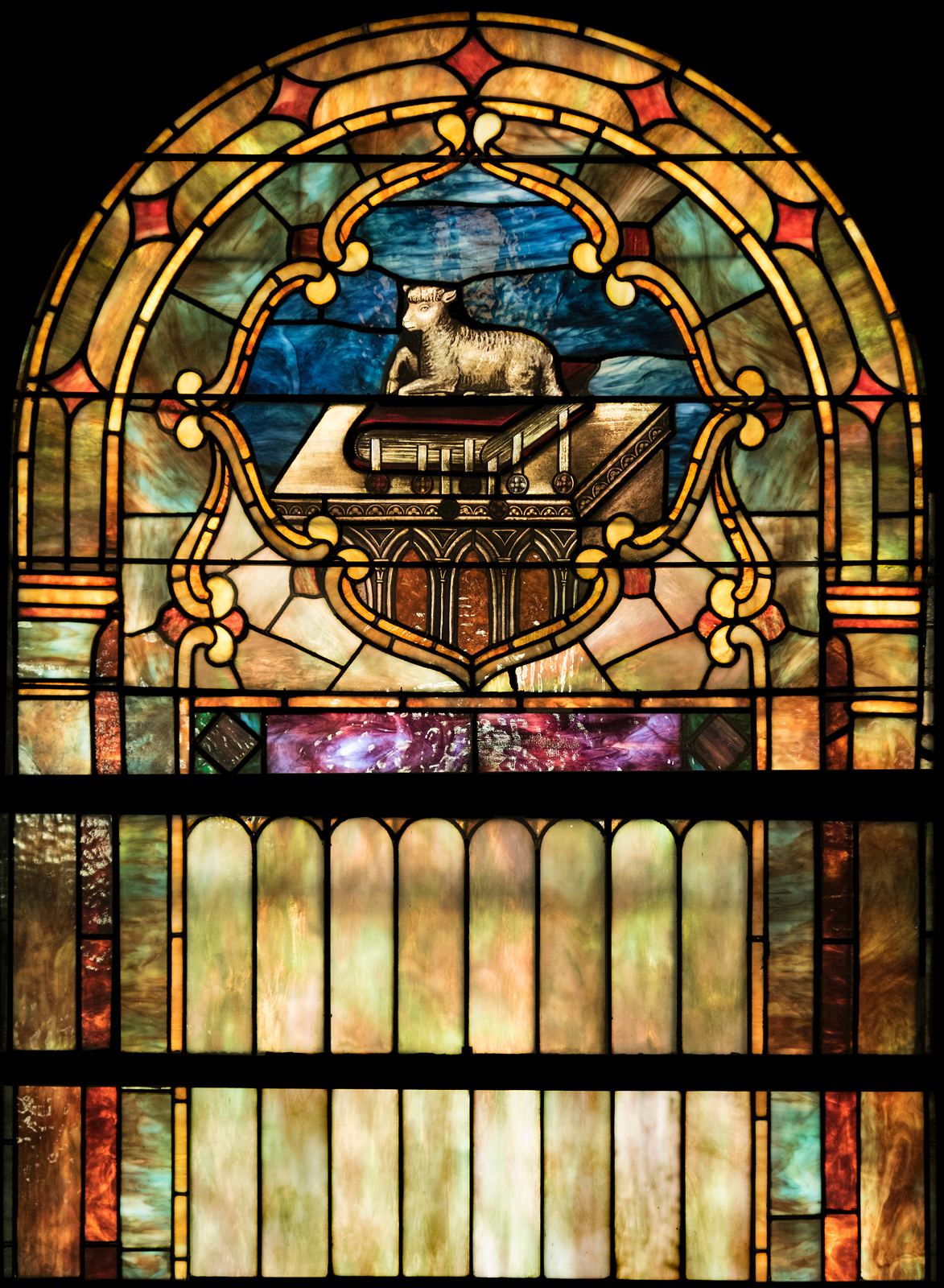
Subject: Lamb
Dedication: In memory of Marshall Carter Hall by St. George’s Sunday School
Maker/Date: Colgate Art Glass Co., New York, 1907
“Lamb of God” was a description of Jesus first used by John the Baptist. “Behold the Lamb of God, who takes away the sin of the world.” (John 1:29)
1:Peter:20 “Christ, a lamb without blemish or defect.”
1 Corinthians 5:7 Jesus is “our Passover lamb.”
Jesus is seen as the sacrificial lamb going to his death but one that has triumphed. A lamb is sacrificed at the Jewish ceremony of Passover.
In the story of Exodus, God planned to compel Pharoah to release the people of Israel from slavery by killing the firstborn of each Egyptian household. He told the people of Israel to sacrifice lambs and use their blood to mark their doorposts so that by that sign God would know to pass over their homes and not take the firstborn.
Jesus died at twilight on Passover, the time God told the Israelites that lamb should be sacrificed (John 19:4/ Exodus 12:6).
Lamb often shown in a position of triumph, standing with its leg hooked around the pole of a flag made up of a red cross on a white background and topped with another cross.
The Lamb can be shown as lamb with feet tied showing the future sacrifice.
Lamb or ram appears in Jewish writing about the apocalypse at the end of time as the agent of God who would crush evil and save God’s people. In the book of Revelation, John saw a lamb and a book with 7 seals. When the lamb opened the seals, it ushered in the final apocalypse. Thus if a lamb is near a book from which 7 seals are shown, it is a reference to this event.